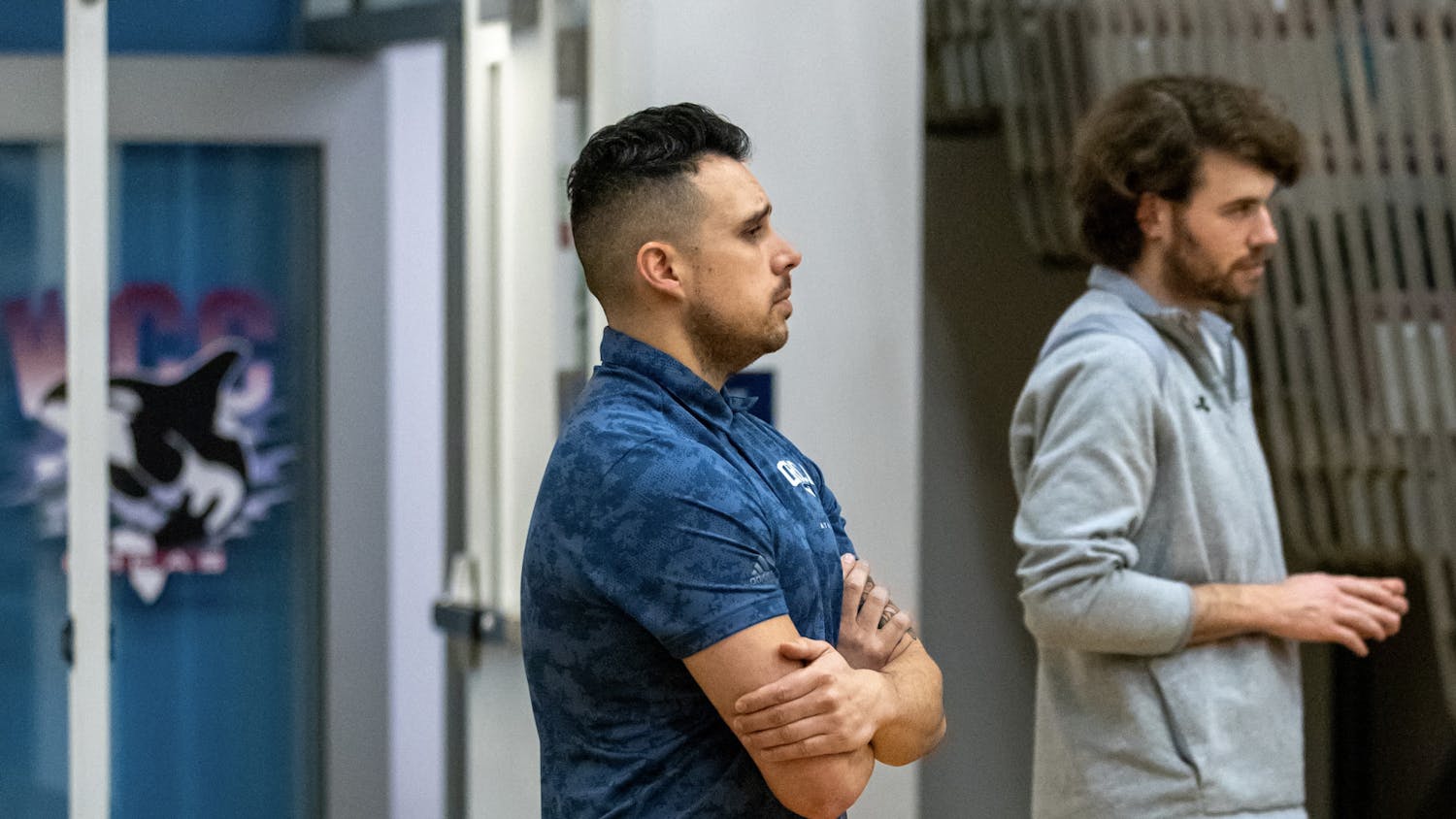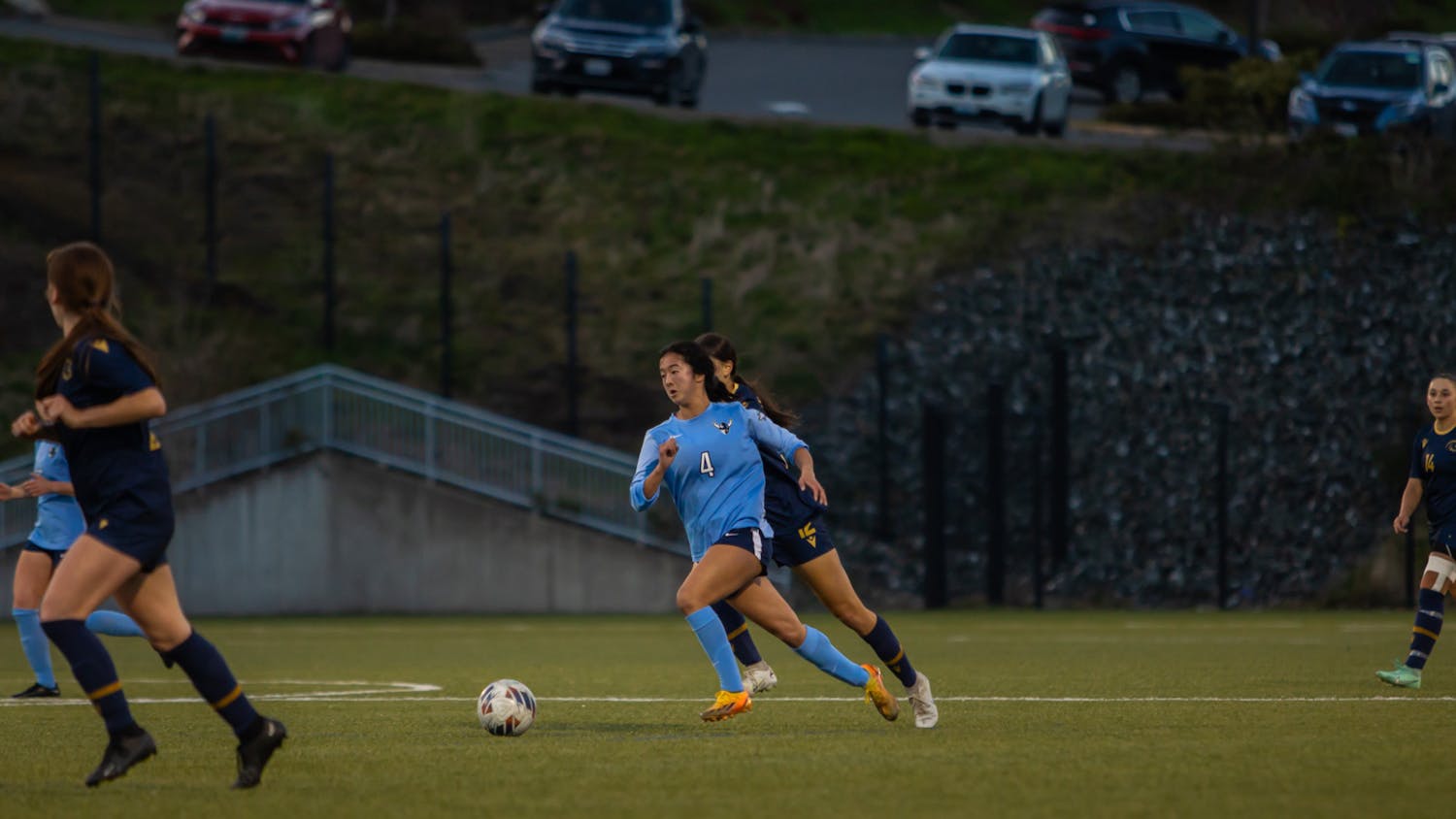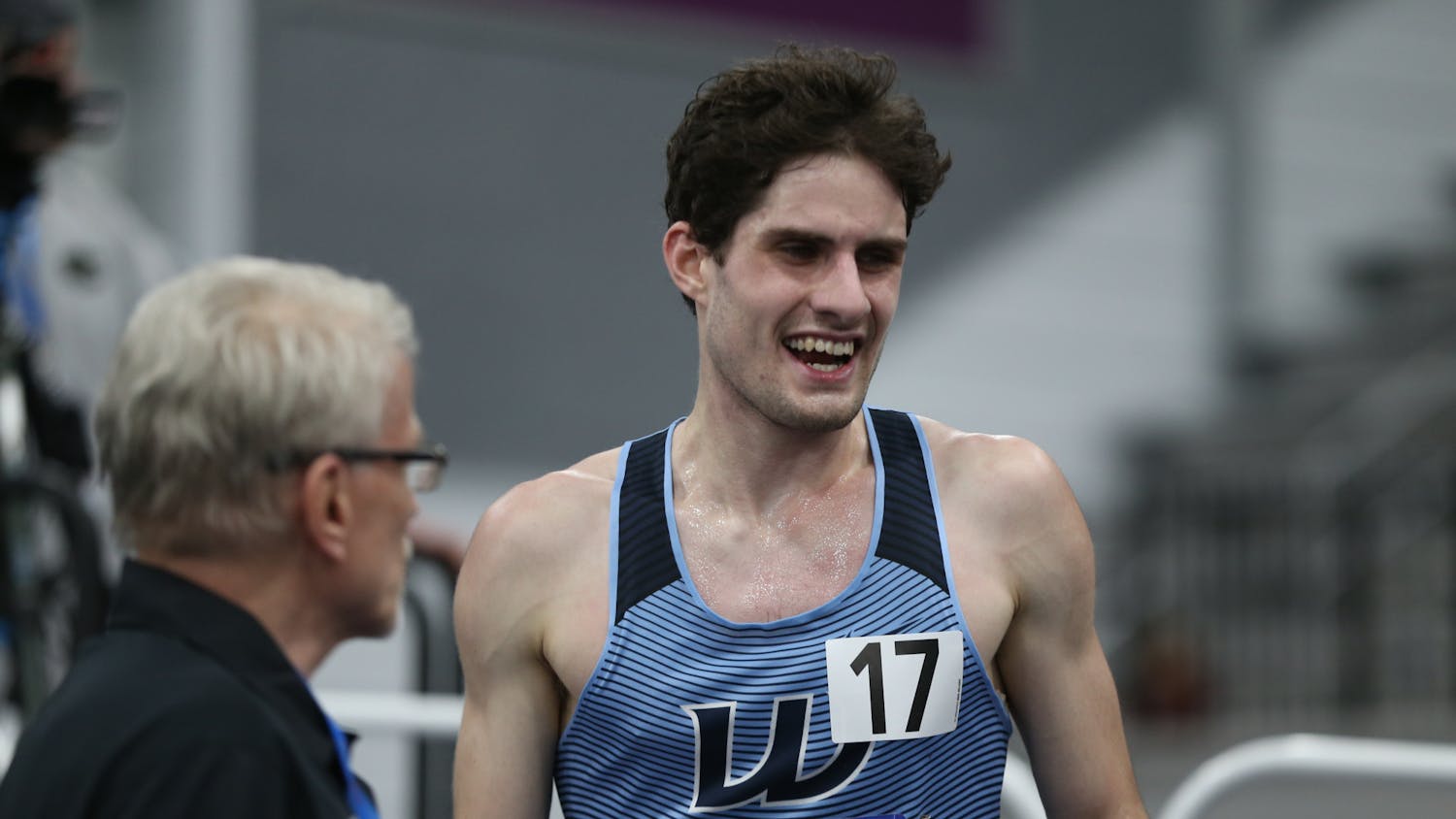 Being recruited by major colleges is the dream of most high school athletes. Excitement builds as scouts come to big games, students receive offers from colleges and anxiously await their signing day.
Western is a Division II school, so the reruitment isn't as competive as D-I schools. Also, popular sports such as football are not a part of the school's atheltic program.
In the hyper-competitive world of D-I sports, does the nature of today’s college recruiting serve to help or hinder student athletes?
Recently, Texas A&M’s football program has come under scrutiny because of a Twitter debacle between recruits and a member of their coaching staff.
On May 4, Tate Martell, the number one ranked dual-threat quarterback in the country, announced via Twitter he was reopening his recruiting process, effectively ending his commitment to Texas A&M.
A few minutes after Martell’s announcement, Texas A&M wide receivers coach Aaron Moorehead began tweeting about loyalty:
“I feel sorry for ppl [sic] who never understand loyalty. I can’t really even vibe with u [sic]. At the end of the day trust is 100 & everything else is BS.”
Wide receiver Mannie Netherly then announced via Twitter he would also be decommitting from the school due to Moorehead’s tweets.
Stanford signee K.J. Costello responded to the events by tweeting, “I’m not gonna lie recruiting is heading in a dangerous direction… Too many offers, too early, leading to unstable commitments.”
Costello’s statement raises important questions about some of the harsh realities of college recruiting.
For schools, the results of even a moderately successful athletic program can pay huge dividends. Texas A&M’s total revenue from their sports program exceeded $192 million in 2015, more than any other college in the nation, according to USA Today. It is certainly in a college’s best interest to be competitive in sports on a national level.
What about the student athlete?
Being recruited by major colleges is the dream of most high school athletes. Excitement builds as scouts come to big games, students receive offers from colleges and anxiously await their signing day.
Western is a Division II school, so the reruitment isn't as competive as D-I schools. Also, popular sports such as football are not a part of the school's atheltic program.
In the hyper-competitive world of D-I sports, does the nature of today’s college recruiting serve to help or hinder student athletes?
Recently, Texas A&M’s football program has come under scrutiny because of a Twitter debacle between recruits and a member of their coaching staff.
On May 4, Tate Martell, the number one ranked dual-threat quarterback in the country, announced via Twitter he was reopening his recruiting process, effectively ending his commitment to Texas A&M.
A few minutes after Martell’s announcement, Texas A&M wide receivers coach Aaron Moorehead began tweeting about loyalty:
“I feel sorry for ppl [sic] who never understand loyalty. I can’t really even vibe with u [sic]. At the end of the day trust is 100 & everything else is BS.”
Wide receiver Mannie Netherly then announced via Twitter he would also be decommitting from the school due to Moorehead’s tweets.
Stanford signee K.J. Costello responded to the events by tweeting, “I’m not gonna lie recruiting is heading in a dangerous direction… Too many offers, too early, leading to unstable commitments.”
Costello’s statement raises important questions about some of the harsh realities of college recruiting.
For schools, the results of even a moderately successful athletic program can pay huge dividends. Texas A&M’s total revenue from their sports program exceeded $192 million in 2015, more than any other college in the nation, according to USA Today. It is certainly in a college’s best interest to be competitive in sports on a national level.
What about the student athlete?
It’s time for universities to remember these kids are supposed to be the future of our country, not just a few more dollars in the administrations’ pocket.
Once a player has been recruited, they are consistently pressured to improve their game. The constant pressure of performing at the D-I level can take its toll.
According to NCAA research, college football players only have a 1.6 percent chance of continuing on to a career in a major professional sports league; for men’s basketball there is only a 1.1 percent chance. Women’s basketball players have the lowest success of any major college sport with only 0.9 percent of players making it to the WNBA.
With odds like that, recruits would be foolish to not take a look at the bigger picture when they are deciding which college is right for them. Can anyone really blame an 18-year-old student for changing their mind?
College is one of the most transformational periods in a person’s life. It simply isn’t feasible that students who are being recruited as early as their freshman year of high school ﹘ or even earlier for some ﹘ truly know what qualities and programs are going to best serve them further down the road when forced to examine schools so early on.
With so much to consider, the amount of pressure universities put on students to commit to them isn't fair.
And speaking of loyalty, universities aren’t exactly the gold standard themselves.
University of Michigan’s head coach Jim Harbaugh has made headlines for rescinding scholarships from commits after getting higher profile recruits to agree to come to Michigan.
Students athletes can also lose scholarships due to injuries, if their performance in games isn’t satisfactory and if they can’t maintain a good GPA.
And yet it seems like every year a major university receives some form of sanctions for how the administration handles the school's athletic program.
And the student athletes often shoulder the brunt of the blame.
This is a shame. College sports can and should be a positive and valuable experience.
The time has come to re-evaluate the way in which college officials are allowed to scout and interact with prospective student athletes. A more accepting atmosphere needs to be created in which recruits are treated in a way that aligns with who they really are — young adults. These young adults’ minds and, therefore, ideas are subject to change as they grow into adults. As they do so, they should not face harassment as Martell did from Moorehead.
It’s time for universities to remember these kids are supposed to be the future of our country, not just a few more dollars in the administrations’ pocket.
 Being recruited by major colleges is the dream of most high school athletes. Excitement builds as scouts come to big games, students receive offers from colleges and anxiously await their signing day.
Western is a Division II school, so the reruitment isn't as competive as D-I schools. Also, popular sports such as football are not a part of the school's atheltic program.
In the hyper-competitive world of D-I sports, does the nature of today’s college recruiting serve to help or hinder student athletes?
Recently, Texas A&M’s football program has come under scrutiny because of a Twitter debacle between recruits and a member of their coaching staff.
On May 4, Tate Martell, the number one ranked dual-threat quarterback in the country, announced via Twitter he was reopening his recruiting process, effectively ending his commitment to Texas A&M.
A few minutes after Martell’s announcement, Texas A&M wide receivers coach Aaron Moorehead began tweeting about loyalty:
“I feel sorry for ppl [sic] who never understand loyalty. I can’t really even vibe with u [sic]. At the end of the day trust is 100 & everything else is BS.”
Wide receiver Mannie Netherly then announced via Twitter he would also be decommitting from the school due to Moorehead’s tweets.
Stanford signee K.J. Costello responded to the events by tweeting, “I’m not gonna lie recruiting is heading in a dangerous direction… Too many offers, too early, leading to unstable commitments.”
Costello’s statement raises important questions about some of the harsh realities of college recruiting.
For schools, the results of even a moderately successful athletic program can pay huge dividends. Texas A&M’s total revenue from their sports program exceeded $192 million in 2015, more than any other college in the nation, according to USA Today. It is certainly in a college’s best interest to be competitive in sports on a national level.
What about the student athlete?
Being recruited by major colleges is the dream of most high school athletes. Excitement builds as scouts come to big games, students receive offers from colleges and anxiously await their signing day.
Western is a Division II school, so the reruitment isn't as competive as D-I schools. Also, popular sports such as football are not a part of the school's atheltic program.
In the hyper-competitive world of D-I sports, does the nature of today’s college recruiting serve to help or hinder student athletes?
Recently, Texas A&M’s football program has come under scrutiny because of a Twitter debacle between recruits and a member of their coaching staff.
On May 4, Tate Martell, the number one ranked dual-threat quarterback in the country, announced via Twitter he was reopening his recruiting process, effectively ending his commitment to Texas A&M.
A few minutes after Martell’s announcement, Texas A&M wide receivers coach Aaron Moorehead began tweeting about loyalty:
“I feel sorry for ppl [sic] who never understand loyalty. I can’t really even vibe with u [sic]. At the end of the day trust is 100 & everything else is BS.”
Wide receiver Mannie Netherly then announced via Twitter he would also be decommitting from the school due to Moorehead’s tweets.
Stanford signee K.J. Costello responded to the events by tweeting, “I’m not gonna lie recruiting is heading in a dangerous direction… Too many offers, too early, leading to unstable commitments.”
Costello’s statement raises important questions about some of the harsh realities of college recruiting.
For schools, the results of even a moderately successful athletic program can pay huge dividends. Texas A&M’s total revenue from their sports program exceeded $192 million in 2015, more than any other college in the nation, according to USA Today. It is certainly in a college’s best interest to be competitive in sports on a national level.
What about the student athlete?





